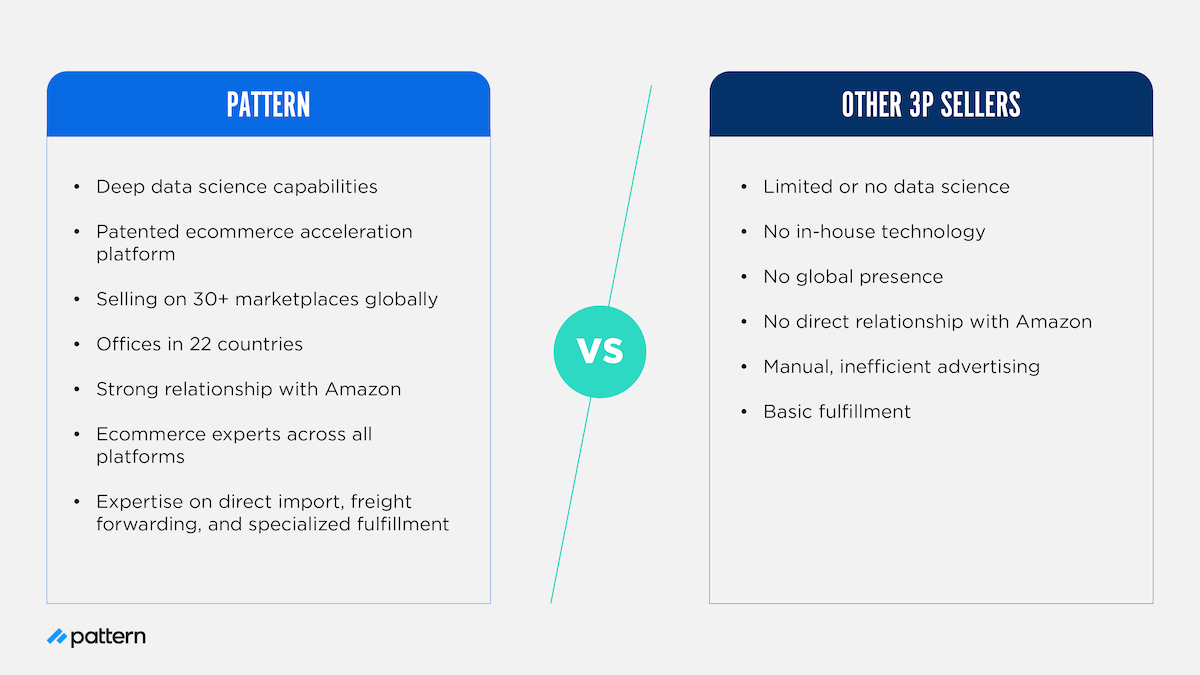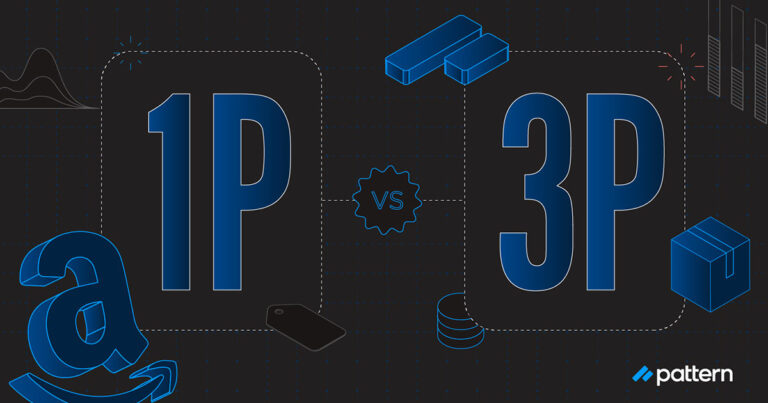These days, more than 50% of Amazon’s sales come from third-party sellers. If you’re one of those brands who stopped receiving purchase orders from Amazon recently or are simply hoping to become an Amazon third-party (3P) seller, now is the time to seriously consider switching.
Before you get started, it’s important to understand a few things about Amazon and Amazon sellers:
- Amazon sells products from a variety of brands.
- Amazon has its own private label goods.
- Less than half of all sales are by Amazon, and the remaining transactions are from third-party sellers.
Amazon’s goal is to offer the best possible prices and the widest range of products to consumers online. That’s why existing retailers and entrepreneurs can list their own products for sale. 3P sellers can do very well on Amazon by offering competitive pricing and top-notch products.
Here’s how to become an Amazon 3P seller:
1. Set Up an Amazon 3P Seller Account
Before you can start selling on Amazon, you need to set up an account. To do this, you’ll first need to:
- Decide between an Individual Seller or Pro Account
- Make sure you understand Amazon’s selling policies & seller code of conduct
- Gather your business details
If you’ll be selling fewer than 40 items a month, you can choose to be an Amazon Individual Seller. For businesses planning to sell more than 40 items, you’ll need to sign up for an Amazon Pro Seller Account. And if you’re manufacturing your own products, you can choose to have an Amazon Vendor account and become an Amazon wholesaler if you meet certain requirements.
The Amazon Vendor club is currently invite-only for nationally distributed brands. There are pros and cons with Vendor Central for manufacturers and brands. For example, in 2019, Amazon quit sending purchase orders to thousands of those selling through the Vendor Central platform, causing many to question the long term viability of choosing this route.
2. Set Up a Seller Profile
Once you have an active account, you can complete your seller profile. This is where customers can see information about your company, review feedback from past customers, and see your return and shipping policies.
Through your seller profile, you can tell customers all about your business, share your mission or company philosophy, and create an emotional connection with potential customers.
3. List Your Products
When your account and profile are set up, you can list the products you’d like to sell in the marketplace. If your product is already for sale on Amazon due to your previously selling through 1P, you can use the descriptions and stock images already available on the site, but you’ll still need to describe the products and list how many you have available.
If you’re moving from Vendor Central to Seller Central, all of the products (ASINs) you were already selling will make this process simpler. All of the content and images you created for your products in Vendor Central should stay.
If you’re a manufacturer or brand, make sure you take advantage of Amazon’s Brand Registry.
If you have a new product, you’ll have less competition, but you’ll need to provide a UPC/EAN Number, SKU, product title, description, bullet points, and images when you create your listing(s).
4. Choose Your Fulfillment Method
You have two options when it comes to shipping and fulfillment. The first is Fulfillment by Merchant (FBM). That means that it’s your responsibility to maintain your inventory as well as label, package, and ship your products to each customer.
The second option is Fulfillment by Amazon (FBA), meaning your inventory is stored in Amazon’s fulfillment centers, and you don’t need to worry about packaging and shipping. However, if you do choose FBA, you’ll need to meet the prep requirements. These include correct labeling, removing any other scannable barcodes, and packaging each unit within one secure package.
For example, poly bags must have warnings to prevent suffocation, and expiration dates must be clearly marked in the correct format. There are a number of other prep requirements that you must follow in order for your products to be accepted.
Additional Considerations for Running Your 3P Account
Tax Nexus Creation
Before deciding to go the FBA delivery option as a seller, consider the tax consequences that come from it—you’ll still own the inventory until it’s sold. The Supreme Court ruled in June 2018 that marketplace sellers, holding product in marketplace distribution centers (Amazon Fulfillment Centers) need to create a Tax Nexus for each state the distribution centers were located within.
3P Forecasting
When you’re selling through 3P, you are the one completely responsible for maintaining stock inventory levels consistent with demand. Both FBM and FBA will require you to retain enough inventory in your warehouse or in the FBA warehouses and regularly restock inventory to ensure that you’re “in stock” on all products.
Out of Stocks
If Amazon runs out of inventory of your product, it will be marked “Out of Stock” and the Buy Box will defer to another seller. If all sellers are out of stock, the product detail page will no longer be searchable other than through an amazon.com/dp/ASIN URL direct search for the product.
Out of Stock issues will affect your ability to leverage Amazon to grow sales more than any other selling issues. At Pattern, we refer to this as the “Amazon Death Spiral”—once you’re out of stock, your advertising is shut off, your sales rank drops, and you quickly lose any organic keyword ranking.
This will also open you up to unauthorized sellers jumping in to sell your product and fulfill consumer demand. Essentially, you can’t capture traffic or conversions for your products because of inventory issues.
3P Customer Service
As a 3P seller, you’ll be responsible to respond to customer inquiries and process returns. Amazon Seller Central mandates that customers receive a response no later than 24 hours after they submit a question, including weekends and holidays. If you fail to respond within the proper time, you may have your account suspended.
3P Payment Terms
Amazon will pay you twice a month and notify you after each payment. There are several costs and deductions that are taken out of your Amazon payments similar to accruals. These costs include:
- FBA Shipping Costs: aggregated costs of all shipping FBA costs
- Seller Commission Fees: % of total retail value of the product based on category
- Long Term Storage Fees: additional fees for products held in Amazon’s fulfillment centers over 6 months
- Promo Rebates: for any discounts or concessions provided to customers
- Advertising Costs
- Premium Account Monthly Cost
3P Authorized Wholesale Partner: The Pattern Model
Another option available to brands and manufacturers is working with a 3P authorized seller. This is how Pattern partners with brands. Pattern buys inventory from a brand and resells the inventory on the Amazon marketplace, (and other global marketplaces like eBay, Tmall, JD.com, etc.) as an authorized seller.

Pattern takes inventory risk and assists brands by reinvesting margins into brand growth via content & advertising, brand protection, and brand global distribution.
The seller (Pattern) under this model will list on their own seller central account & select the fulfillment method based on margin economics and how to best represent the brand while enabling sales on the Amazon platform.
Pattern always buys inventory directly from a brand and provides a prime eligible offer whether it be through FBA, Seller Fulfilled Prime, or FBA On-Site.
If you’re considering switching to become an Amazon 3P seller, contact us to learn more.





